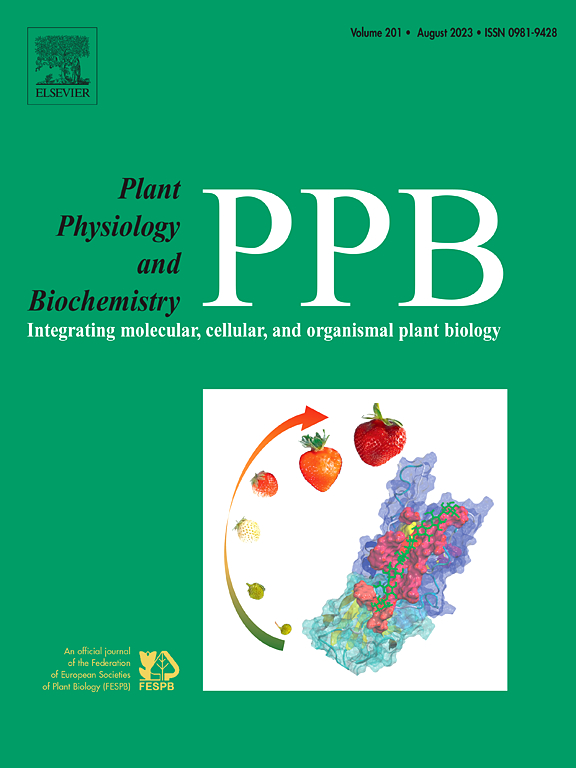From root to leaf: Cell walls of the halophytic grass Distichlis laxiflora comprise highly substituted glucuronoarabinoxylans
IF 6.1
2区 生物学
Q1 PLANT SCIENCES
引用次数: 0
Abstract
Halophytic plants develop their life cycle in high salinity conditions. Several physiological responses explain this, but little was explored regarding the role of their cell walls (CW). In grasses, which have small amounts of pectins, hemicelluloses should show the greatest effects of salt stress. In this work, CW from roots, shoots, and leaves from Distichlis laxiflora collected in spring (the regrowth period) in halophytic (H) and mesophytic (M) meadows were studied. This is a first approach to the CW of halophytic grasses, with an evaluation of differences between organs, and between sites with distinct salinity. The main alkaline fractions contain glucuronoarabinoxylans (GAX) as major component, followed by small amounts of pectins and β-glucans. Analysis of their composition showed that polysaccharides from leaves of both sites differ little, while greater differences (involving xylose, glucuronic acid, glucose, and arabinose) are found within roots. If the alkaline extracts and the final residue are considered together, both leaves and shoots have ≥50% of GAX and 20–30% cellulose in their CW, while roots show similar amounts of GAX and cellulose (35–40% of each). Additionally, GAX from roots show a higher degree of substitution with glucuronic acid, regarding the other organs and GAX reported for other grasses, and considerable amounts of 4-linked xylopyranose residues disubstituted with single ramifications of α-L-arabinofuranose. As the first barrier in contact with soil salinity, roots respond through the modification of the classical structure of GAX, which would be more suitable to entrap Na+ ions, by the presence of more negative charges.

求助全文
约1分钟内获得全文
求助全文
来源期刊
CiteScore
11.10
自引率
3.10%
发文量
410
审稿时长
33 days
期刊介绍:
Plant Physiology and Biochemistry publishes original theoretical, experimental and technical contributions in the various fields of plant physiology (biochemistry, physiology, structure, genetics, plant-microbe interactions, etc.) at diverse levels of integration (molecular, subcellular, cellular, organ, whole plant, environmental). Opinions expressed in the journal are the sole responsibility of the authors and publication does not imply the editors'' agreement.
Manuscripts describing molecular-genetic and/or gene expression data that are not integrated with biochemical analysis and/or actual measurements of plant physiological processes are not suitable for PPB. Also "Omics" studies (transcriptomics, proteomics, metabolomics, etc.) reporting descriptive analysis without an element of functional validation assays, will not be considered. Similarly, applied agronomic or phytochemical studies that generate no new, fundamental insights in plant physiological and/or biochemical processes are not suitable for publication in PPB.
Plant Physiology and Biochemistry publishes several types of articles: Reviews, Papers and Short Papers. Articles for Reviews are either invited by the editor or proposed by the authors for the editor''s prior agreement. Reviews should not exceed 40 typewritten pages and Short Papers no more than approximately 8 typewritten pages. The fundamental character of Plant Physiology and Biochemistry remains that of a journal for original results.

 求助内容:
求助内容: 应助结果提醒方式:
应助结果提醒方式:


